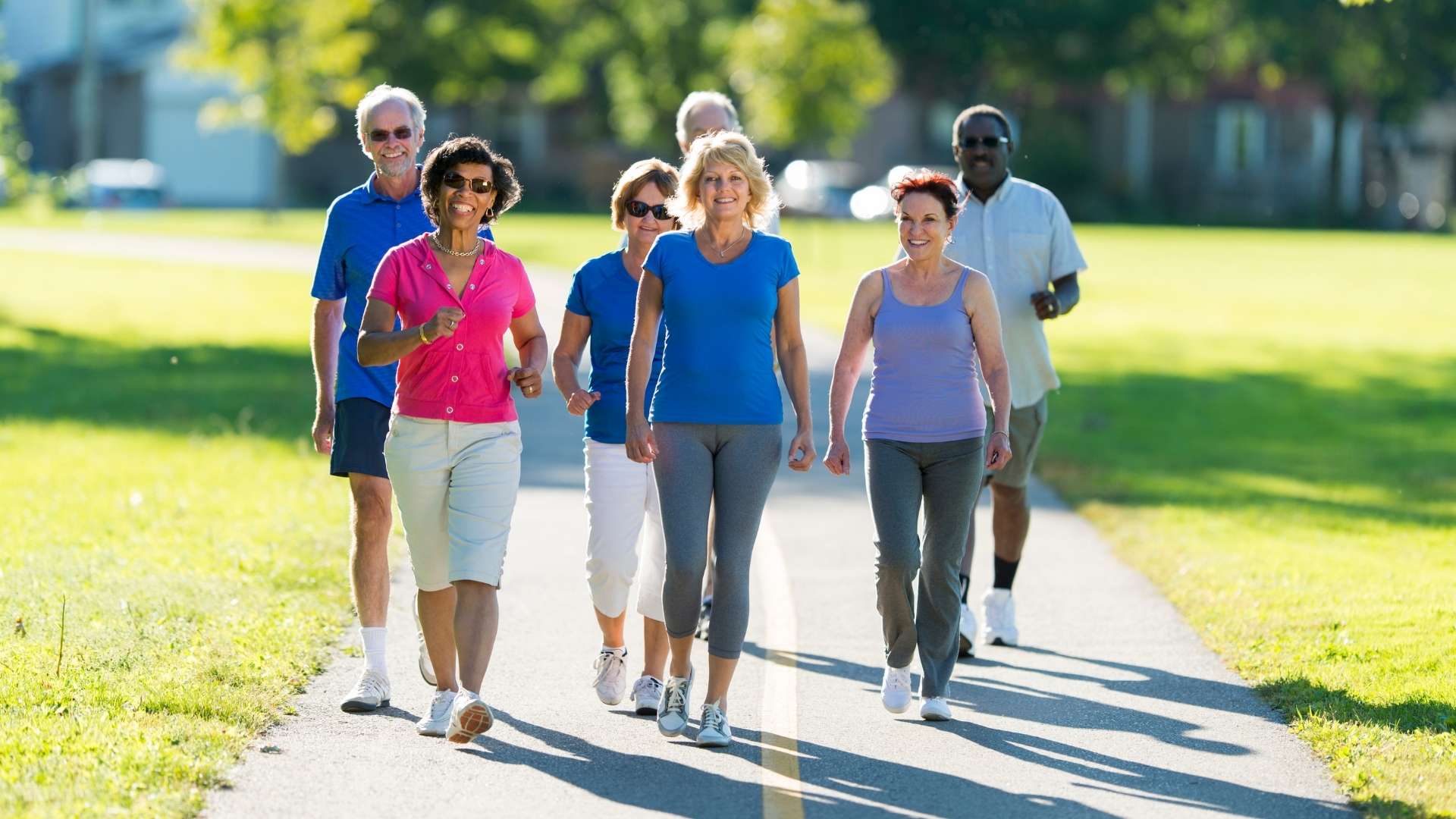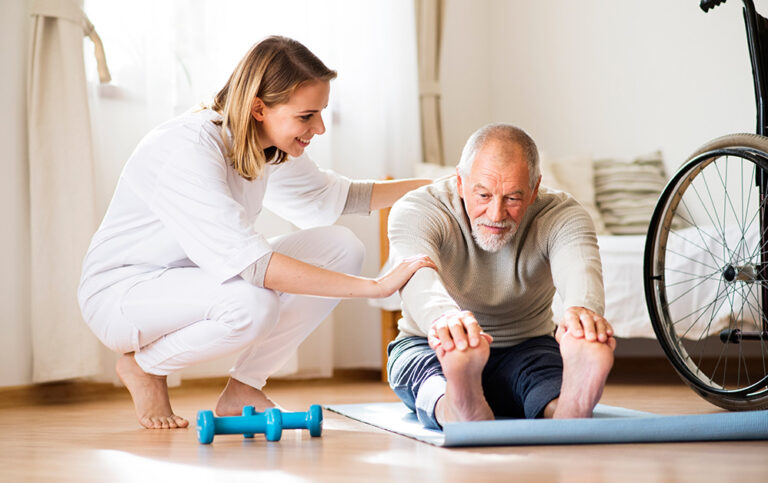Walking is one of the simplest and most accessible forms of exercise, especially for the elderly. It requires no special equipment, can be done almost anywhere, and offers a wide range of physical and mental health benefits. In this article, we’ll explore the importance of walking for the elderly, the benefits it offers, and practical tips on how seniors can incorporate walking into their daily routines to improve their overall quality of life.
Introduction to Walking for the Elderly
As we age, maintaining an active lifestyle becomes increasingly important. Regular physical activity helps to reduce the risk of chronic diseases, maintain mobility, and improve mental well-being. Among the various forms of exercise, walking stands out as an ideal choice for seniors due to its low impact and numerous health benefits. In this article, we will discuss why walking is particularly beneficial for the elderly, how it can be safely incorporated into their daily lives, and the positive effects it can have on their physical and mental health.
The Benefits of Walking for the Elderly
1. Physical Health Benefits
a. Cardiovascular Health
Walking is a great way to keep the heart healthy. Regular walking helps to improve circulation, lower blood pressure, and reduce the risk of heart disease. For the elderly, these benefits are especially important as cardiovascular health tends to decline with age. By engaging in daily walks, seniors can strengthen their heart muscles, improve blood flow, and maintain healthier cholesterol levels.
b. Joint Health and Mobility
As we age, our joints can become stiff and painful, making it difficult to move around. Walking helps to keep the joints flexible and reduces the risk of arthritis. The gentle movement of walking lubricates the joints, making it easier for seniors to stay active and mobile. Additionally, walking helps to strengthen the muscles around the joints, providing better support and reducing the likelihood of injury.
c. Bone Density
Osteoporosis is a common concern among the elderly, leading to fragile bones and an increased risk of fractures. Walking is a weight-bearing exercise that helps to maintain bone density and strength. Regular walking can slow down the loss of bone mass and reduce the risk of osteoporosis-related fractures.
d. Weight Management
Maintaining a healthy weight becomes more challenging as metabolism slows with age. Walking is an effective way to burn calories and manage weight. Even a short walk every day can help seniors maintain a healthy body weight, which is crucial for preventing obesity-related conditions such as diabetes and heart disease.
2. Mental Health Benefits
a. Improved Mood
Walking is known to release endorphins, the body’s natural mood enhancers. For the elderly, who may struggle with feelings of loneliness or depression, walking can be a natural way to boost mood and improve emotional well-being. The simple act of getting outside, enjoying fresh air, and taking in nature can have a significant positive impact on mental health.
b. Cognitive Function
Regular physical activity, including walking, has been linked to better cognitive function in older adults. Walking increases blood flow to the brain, which can help improve memory, attention, and overall cognitive abilities. For seniors concerned about cognitive decline or dementia, incorporating walking into their routine can be a valuable way to keep the mind sharp.
c. Stress Reduction
Walking provides a calming effect on the mind. The rhythmic motion and the opportunity to focus on the surroundings can help reduce stress and anxiety. For elderly individuals who may be dealing with life changes or health issues, walking can serve as a form of therapy, providing a sense of peace and relaxation.
3. Social Benefits
a. Social Interaction
Walking can be a social activity, providing opportunities for the elderly to interact with others. Whether it’s joining a walking group, walking with friends, or even just greeting neighbors along the way, these interactions can help combat feelings of isolation and loneliness that are common among seniors.
b. Community Engagement
For elderly individuals, staying engaged with the community is important for mental and emotional well-being. Walking allows them to stay connected with their surroundings, participate in community events, or simply stay aware of what’s happening in their neighborhood. This sense of belonging and involvement can be incredibly fulfilling.
How to Start a Walking Routine for the Elderly
1. Assessing Physical Ability
Before starting a walking routine, it’s important for seniors to assess their physical abilities. Consulting with a healthcare provider can help determine the appropriate level of activity. This assessment will take into account any existing health conditions, mobility limitations, and overall fitness levels. Based on this, a personalized walking plan can be developed.
2. Setting Realistic Goals
Setting achievable goals is key to maintaining motivation. For seniors, these goals might include walking a certain distance, walking for a specific amount of time, or simply committing to walking a few days a week. Starting with short, manageable walks and gradually increasing the distance and duration can help build confidence and endurance.
3. Choosing the Right Gear
Comfortable, supportive footwear is essential for walking. Seniors should invest in a good pair of walking shoes that provide proper cushioning and support. Additionally, wearing appropriate clothing that allows for ease of movement and protects against weather conditions is important. Using walking aids, such as canes or walkers, may also be necessary for those with balance issues.
4. Finding Safe and Enjoyable Routes
Choosing a safe and enjoyable walking route is important for maintaining a regular walking routine. Flat, well-lit paths with minimal traffic are ideal for seniors. Parks, nature trails, and community centers often provide pleasant environments for walking. It’s also beneficial to vary the route occasionally to keep the experience fresh and interesting.
5. Incorporating Walking into Daily Life
Making walking a regular part of daily life can help seniors stay consistent. This can include walking to nearby shops, taking a stroll after meals, or even walking indoors during inclement weather. Finding ways to incorporate walking into daily routines ensures that it becomes a natural and enjoyable habit.
Safety Tips for Elderly Walkers
1. Start Slowly and Warm Up
Seniors should begin their walking routine slowly, especially if they are new to regular physical activity. A warm-up period of 5-10 minutes with gentle stretches or slow walking can prepare the muscles and joints for the activity ahead, reducing the risk of injury.
2. Stay Hydrated
Proper hydration is crucial, even for short walks. Seniors should carry a water bottle and take regular sips, especially during warmer weather. Dehydration can lead to dizziness or fatigue, which can be dangerous during walking.
3. Use Sunscreen and Protective Clothing
Wearing sunscreen, a hat, and sunglasses can protect the skin from harmful UV rays. Even on cloudy days, sun protection is important to prevent sunburn and reduce the risk of skin cancer.
4. Be Mindful of Weather Conditions
Weather can greatly impact the safety and enjoyment of walking. Seniors should avoid walking in extreme heat, cold, or icy conditions. Walking indoors or at a local mall can be a good alternative during unfavorable weather.
5. Walk with a Companion or Carry a Mobile Phone
Walking with a companion can add a layer of safety, especially for seniors who may have balance or health concerns. If walking alone, carrying a mobile phone ensures that help can be reached in case of an emergency.
6. Listen to Your Body
Seniors should always listen to their bodies and stop walking if they feel pain, dizziness, or extreme fatigue. It’s important not to overexert and to take breaks as needed.
Overcoming Common Challenges in Walking for the Elderly
1. Mobility Issues
For seniors with mobility issues, walking can be challenging. However, using walking aids such as canes, walkers, or even a supportive arm from a companion can make walking more accessible. Additionally, physical therapy exercises can help improve mobility over time.
2. Chronic Pain or Arthritis
Chronic pain, especially from conditions like arthritis, can deter seniors from walking. It’s important to find the right balance between staying active and managing pain. Gentle, low-impact walking on soft surfaces, combined with appropriate pain management strategies, can help.
3. Lack of Motivation
Staying motivated to walk regularly can be difficult, especially if it’s not yet a habit. Setting small, achievable goals, tracking progress, and rewarding oneself for milestones can help maintain motivation. Joining a walking group or having a walking buddy can also provide encouragement and accountability. Also read here: Excellence in Fitness Annapolis, MD: A Comprehensive Guide to Achieving Your Fitness Goals
4. Fear of Falling
Fear of falling is a common concern among the elderly. To address this, seniors can choose flat, well-maintained walking paths and use walking aids if needed. Practicing balance exercises and wearing proper footwear can also reduce the risk of falls.
Conclusion: Walking for the Elderly as a Lifelong Habit
Walking is more than just a form of exercise for the elderly; it’s a way to maintain independence, improve health, and enhance quality of life. By incorporating walking into their daily routines, seniors can enjoy the numerous physical, mental, and social benefits that come with regular activity. With the right approach, walking can become a lifelong habit that supports overall well-being and allows the elderly to lead active, fulfilling lives well into their later years.













